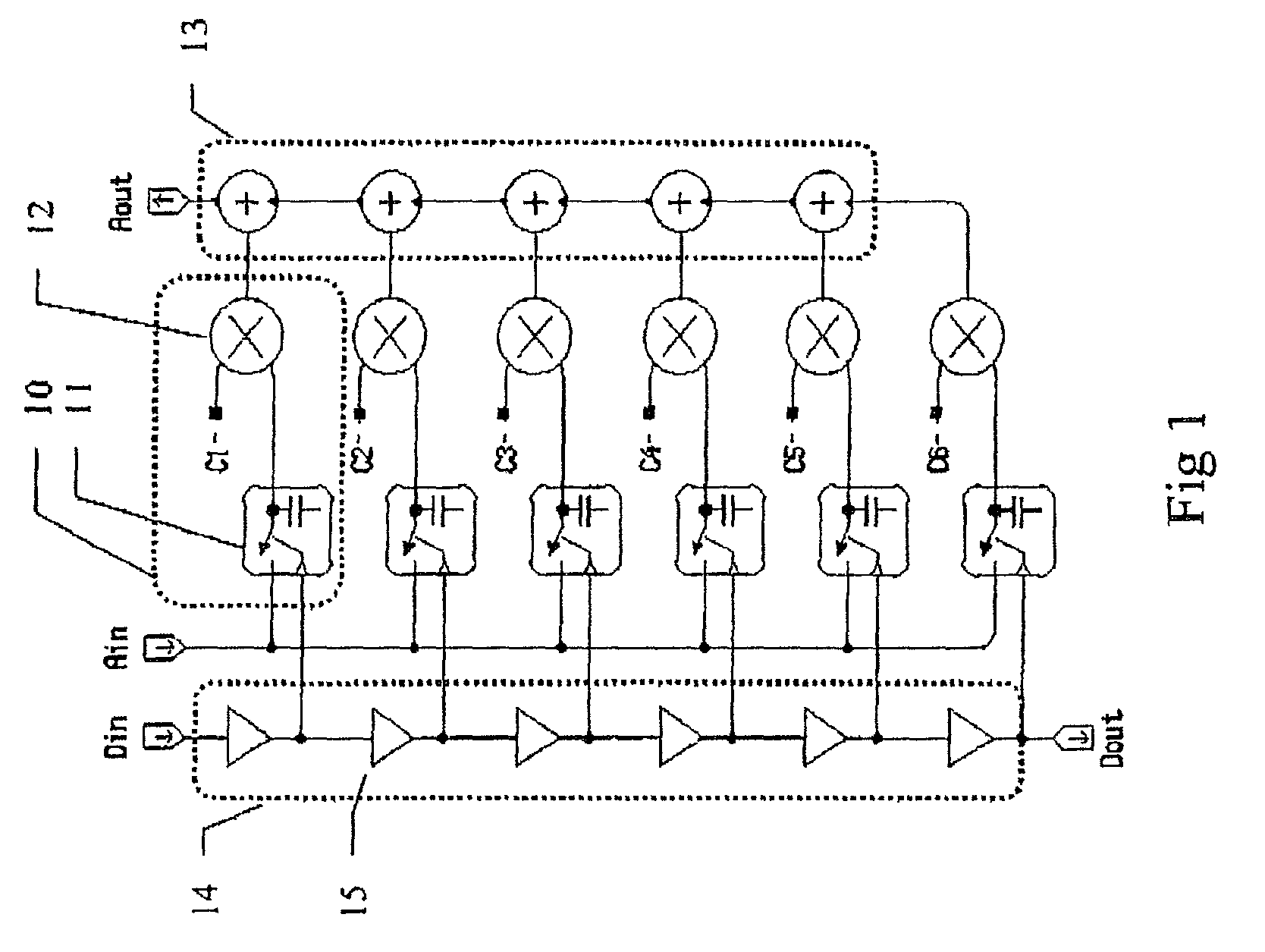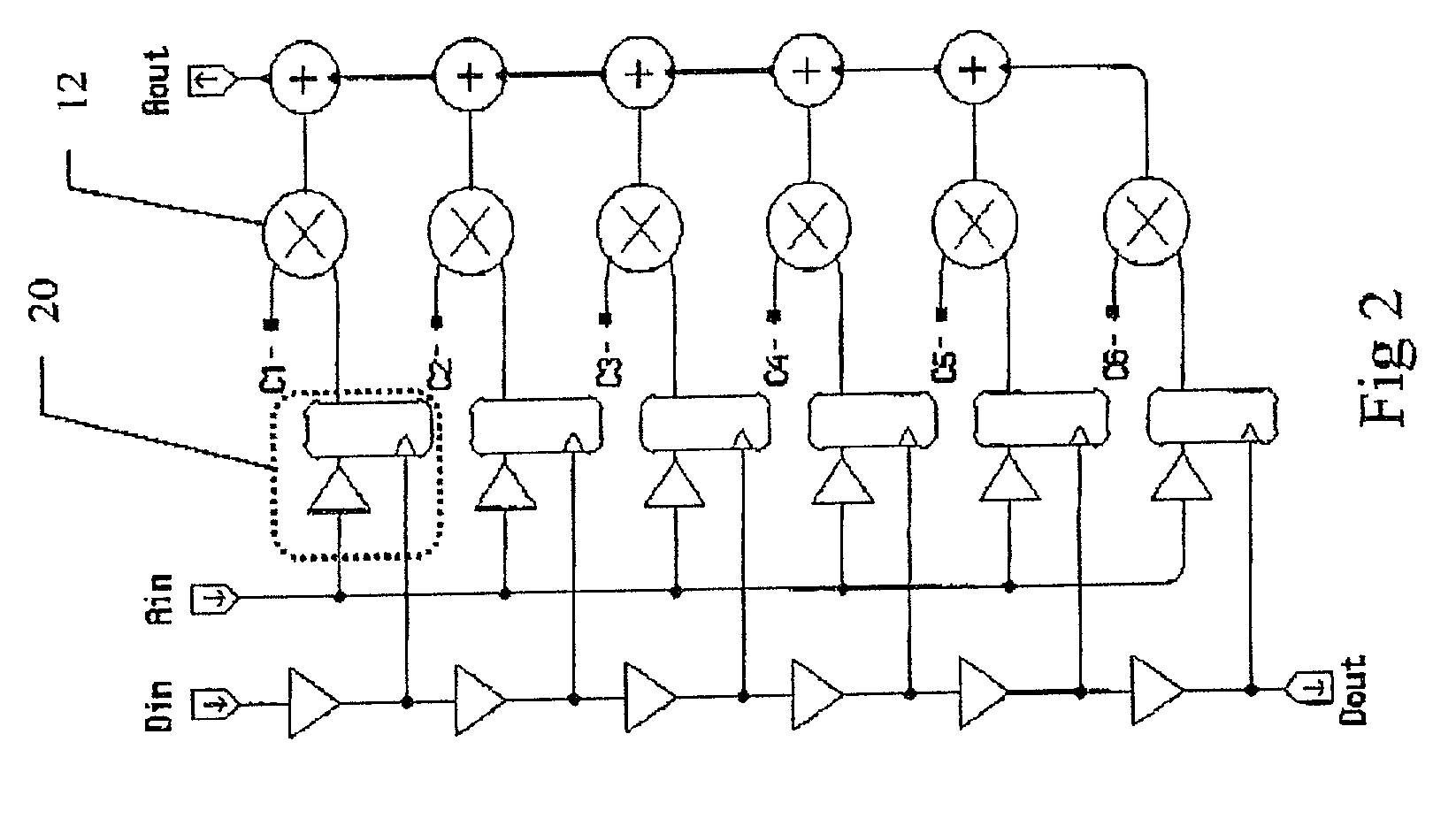High speed filter
a filter and high-speed technology, applied in the field ofsignal processing, can solve the problems of limitation of the processing speed of the digital components involved, remain impractical for frequencies approaching 1 ghz, etc., and achieve the effects of simplifying the analog processing element, increasing the frequency at which the circuit is effective and practical, and reducing the burden of speed
- Summary
- Abstract
- Description
- Claims
- Application Information
AI Technical Summary
Benefits of technology
Problems solved by technology
Method used
Image
Examples
Embodiment Construction
[0035]This is the canonical form of the Fourier integral:
[0036]H(ω)=∫-∞∞X(t)·ⅇj·ω·tⅆt
[0037]While implementation of the Fourier integral would be ideal for detecting a particular frequency, the need to integrate over all time and the continuous nature of the integral rule out its use. However, it is possible to implement the discrete Fourier approximation of the H(ω) term as
R=√{square root over (SS·SS+SC·Sc)}
[0038]whereSs=∑n=0mXn·sin(f·k·n),Sc=∑n=0mXn·cos(f·k·n)
[0039]The term f is the frequency of interest and the constant k depends upon the time interval between samples n. Two summations are needed: one representing the real and one the imaginary term in the integral. Xn is the n th sample of X. The summations are examples of the following sequence:
+Xn·sn+Xn+1·sn+1+Xn+2·sn+2 +Xn+3·sn+3+
where the sn are the fixed (invariant for a particular receiver frequency) sine and cosine terms and the Xn are the samples of the input signal from the radio antenna.
[0040]In prior art f...
PUM
 Login to View More
Login to View More Abstract
Description
Claims
Application Information
 Login to View More
Login to View More - R&D
- Intellectual Property
- Life Sciences
- Materials
- Tech Scout
- Unparalleled Data Quality
- Higher Quality Content
- 60% Fewer Hallucinations
Browse by: Latest US Patents, China's latest patents, Technical Efficacy Thesaurus, Application Domain, Technology Topic, Popular Technical Reports.
© 2025 PatSnap. All rights reserved.Legal|Privacy policy|Modern Slavery Act Transparency Statement|Sitemap|About US| Contact US: help@patsnap.com



